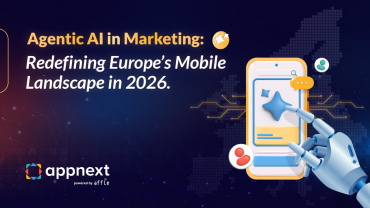Despite the overwhelming amount of time that online consumers spend in apps ( 90% of mobile time), a full one-quarter of all apps are used once — then never again.

Anyone can think of a great app idea, and many more can even build and launch it to the masses, but the majority of apps fail to truly engage users over time.
Before discussing the art of user re-engagement, it would negligible to gloss over user engagement in the first place. It is essential that when crafting, building and launching your app, you first focus on engagement — how to create an app that encourages users to be constantly active in the app over an extended period of time — then re-engagement will be a lot easier.
Many well-known engagement strategies are:
- Creating a landing page that is clean, simple and informative, with top features.
- Requesting opt-in to push notifications.
- Making social sharing convenient for users.
- Tracking event-based engagement levels, (the screens that converted the most, the screens that were abandoned the most) which can be used for targeted re-engagement.
The chart from Statista below lists app categories and compares the average number of app launches to the session length. The apps with the highest ratio are music and entertainment apps. This data can be applied to engagement strategies by utilizing music and entertainment as guiding ideas when building your app, knowing that as categories, they have the highest engagement rates.

Let’s get to the nitty-gritty now. What are the essential user re-engagement strategies that work?
1. Push notifications
This is probably the most well-known and effective re-engagement strategy out there. It’s a friendly reminder saying, “Hey you, remember us?” They are simple, text-based notifications that prompt the user to return with a variety of CTAs. There are many tools that focus on push notifications alone as a means to meaningful re-engagement.
It is optimal that users will opt-in to push notifications at app install, so it’s essential to make your App Store description and landing page as clear as possible, while demonstrating why the notifications will be relevant to the user. Since Android apps automatically opt users in at app install (despite recent changes that make it easier to opt-out later), the challenge is of course iOS users.
Research shows that opt-in rates vary by app category:
- Ride-sharing, food/beverages and financial apps have a higher opt-in rate than the next set of categories;
- Social, news/media and travel
The logic here is that users see more value in notifications for apps from the first set of categories, which makes sense: for ride-sharing, they need to be notified when their ride is outside or delayed; food/beverage apps may have some great time-limited deals that are pushed out; and world financial news is essential to know immediately.
Social, news and travel apps have been thought to be over-saturated with content, thus users tend to opt-out so as to receive less unnecessary information.
2. In-app re-targeting
In-app re-targeting has proven to be extremely effective in re-engagement and lowered organizational costs. Trademob, an in-app re-targeting platform, gets up to 300% higher in-app conversions and up to 95% lowered costs for high-quality user acquisition.
“Mobile-specific” rewards/deals within the app play on the natural human desire to get free or discounted goods or services. It’s estimated that half of all app users have downloaded an app to receive a discount or a special offer. So, play on this tendency in order to get the bargain shoppers re-engaged.
3. Deep linking
Deep linking is when a user is directed straight to an app or somewhere inside the app via a URL. This obviously needs to be coded in the app beforehand. A common way deep linking works is through a mobile ad, such as a Facebook ad, that takes the user straight into the app, to specific content that is likely to convert them, such as the specific product that the ad displayed (i.e., a certain pair of shoes, a particular Groupon deal, etc.). This is in contrast to taking the user simply to the mobile app landing page, which would still be good, but not as good as directing them to relevant content within the app.
In some ways, user re-engagement is more challenging than initial engagement at app install. Re-engaging a user is challenging because many times you’re taking a shot in the dark — you don’t know why a specific user fell off and what would bring them back. Luckily, determining metrics such as event-based interactions (e.g., which pages were abandoned and by whom) can help pinpoint your re-engagement and re-targeting strategies. Push notifications, in-app re-targeting and deep linking can make your users go from MIA to frequent flyers — practically the most challenging yet arguably the most important step in keeping your users busy, engaged, and happy.




Comments are closed.